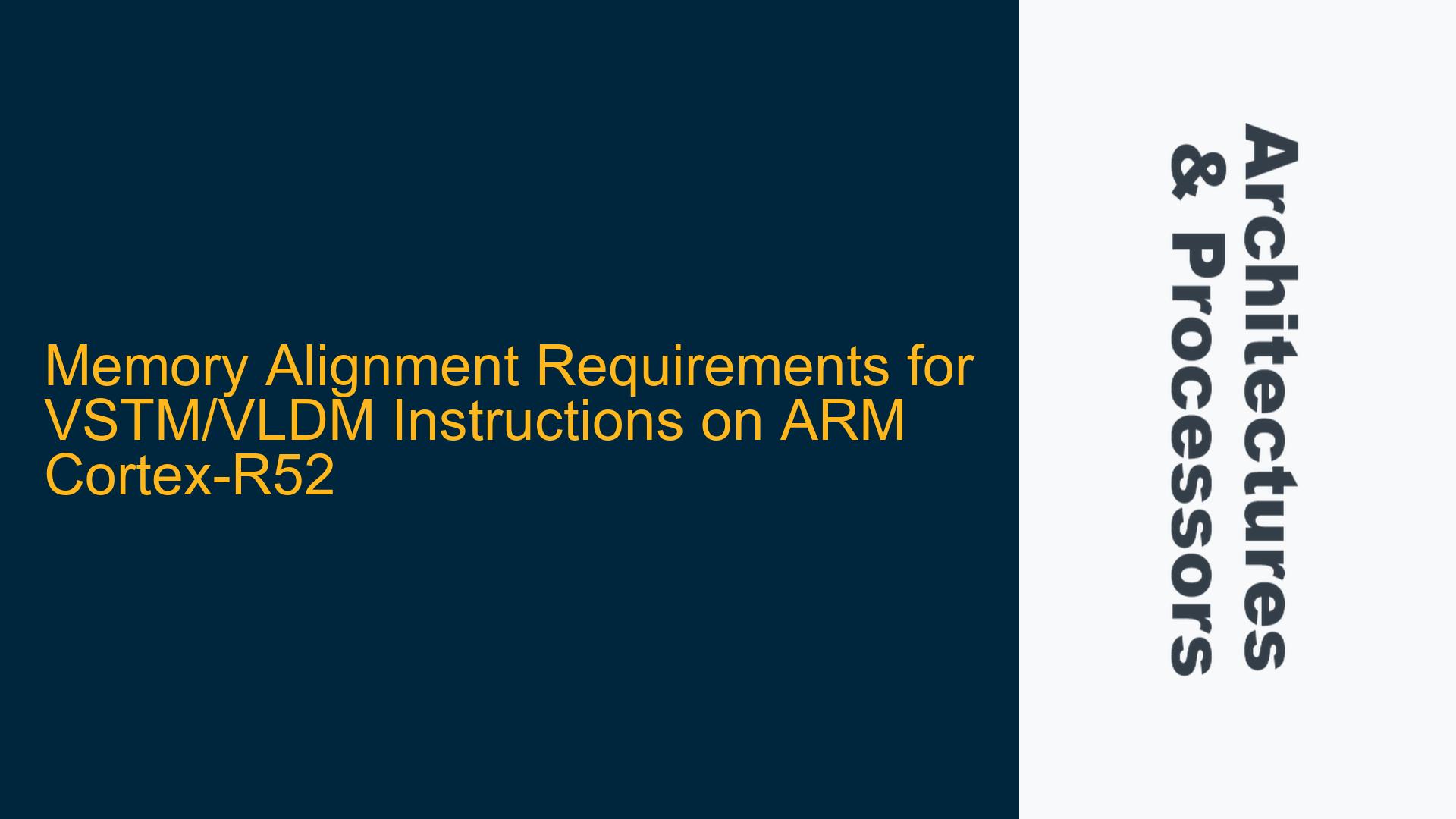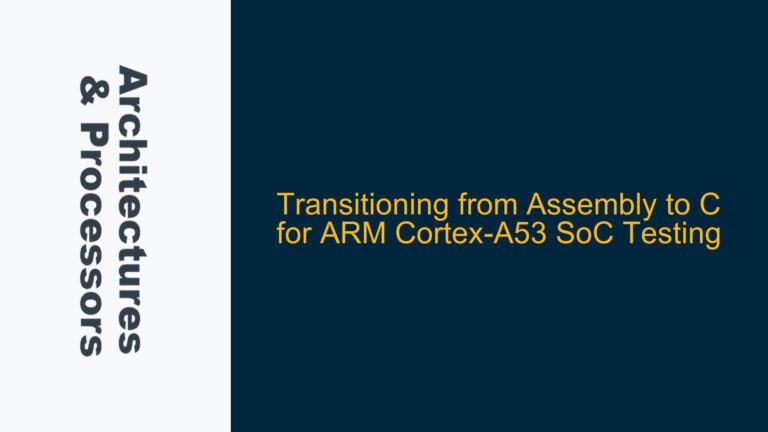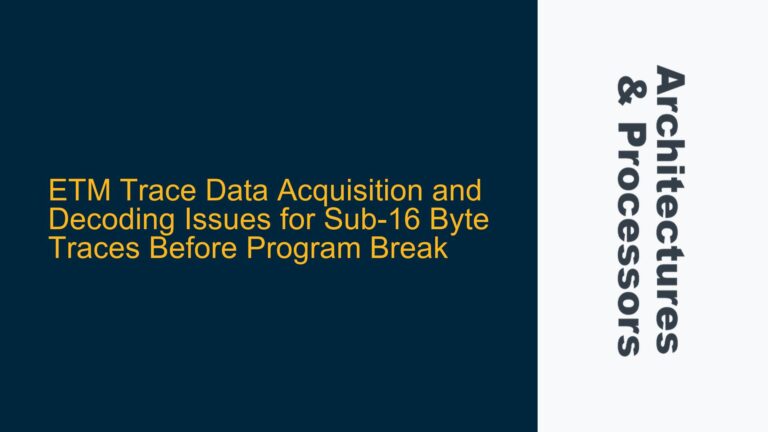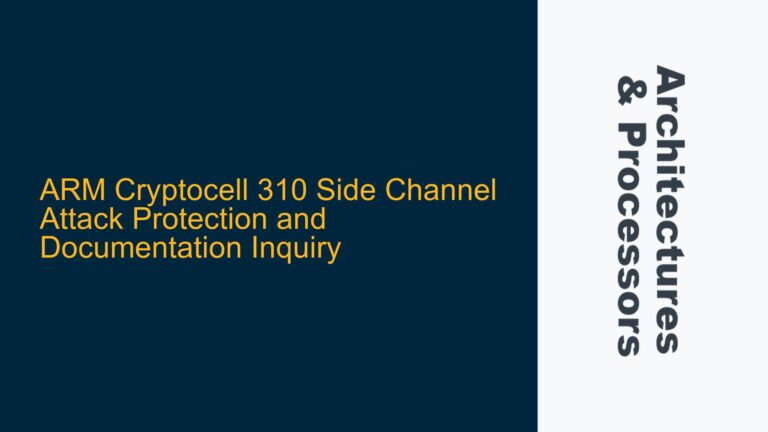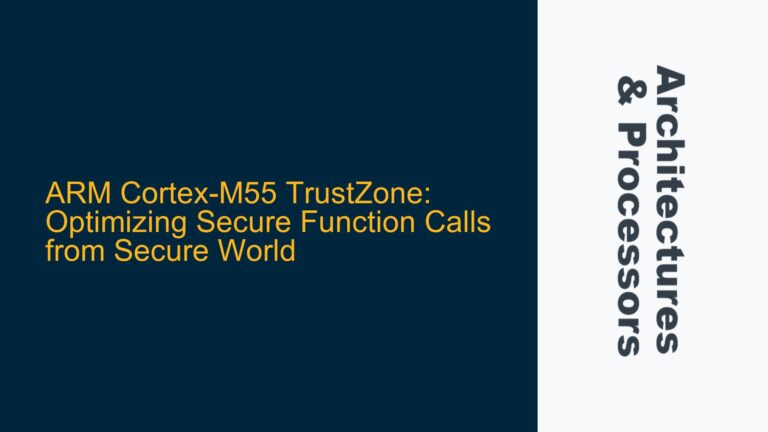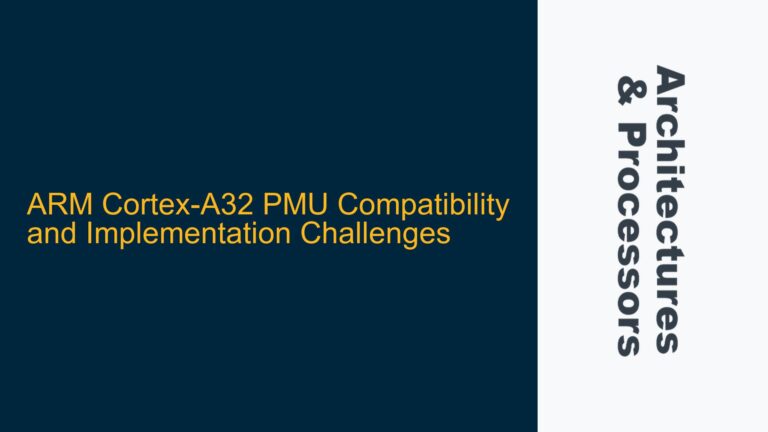ARM Cortex-R52 VSTM/VLDM Memory Alignment Faults in Device Memory
The ARM Cortex-R52 processor, designed for real-time and safety-critical applications, supports advanced SIMD (Single Instruction Multiple Data) operations through its VFP (Vector Floating Point) and NEON extensions. These extensions enable efficient handling of vectorized data using instructions like VSTM (Vector Store Multiple) and VLDM (Vector Load Multiple). However, improper memory alignment when using these instructions, especially in device memory regions, can lead to alignment faults, performance degradation, or even undefined behavior. This issue is particularly critical in embedded systems where memory constraints and real-time performance are paramount.
The VSTM and VLDM instructions are used to store and load multiple floating-point or SIMD registers to and from memory. These instructions operate on quadword (Q) registers, such as Q0-Q7, which are 128-bit wide. When using these instructions, the memory address specified in the base register (e.g., r0) must adhere to specific alignment requirements. Failure to meet these requirements can result in alignment faults, especially when dealing with device memory, which often has stricter alignment constraints compared to normal memory.
The alignment requirements for VSTM and VLDM instructions are dictated by the ARM architecture and the specific implementation of the Cortex-R52 processor. For example, the ARM Architecture Reference Manual specifies that the memory address for VSTM and VLDM instructions must be aligned to at least 8 bytes. However, for optimal performance and to avoid alignment faults, it is recommended to align the memory address to 16 bytes, which matches the size of the quadword registers.
Device memory, which is used for memory-mapped I/O (MMIO) and other hardware peripherals, often has additional alignment constraints due to the nature of the hardware. Accessing device memory with misaligned addresses can lead to unpredictable behavior, including alignment faults, data corruption, or even hardware malfunctions. Therefore, understanding and adhering to the alignment requirements for VSTM and VLDM instructions is crucial when working with device memory on the Cortex-R52.
Memory Alignment Constraints and Device Memory Access Rules
The alignment constraints for VSTM and VLDM instructions on the ARM Cortex-R52 are influenced by several factors, including the ARM architecture specifications, the Cortex-R52 implementation, and the type of memory being accessed. The ARM Architecture Reference Manual specifies that the memory address for VSTM and VLDM instructions must be aligned to at least 8 bytes. However, the Cortex-R52 processor, like many ARM cores, performs best when the memory address is aligned to 16 bytes, which matches the size of the quadword registers (Q0-Q7).
When accessing normal memory, the Cortex-R52 can handle misaligned addresses to some extent, although this may result in performance penalties due to additional memory cycles required to handle the misalignment. However, when accessing device memory, the rules are much stricter. Device memory is typically used for memory-mapped I/O (MMIO) and other hardware peripherals, which often require aligned accesses to function correctly. Misaligned accesses to device memory can result in alignment faults, data corruption, or even hardware malfunctions.
The alignment constraints for device memory are often specified in the Technical Reference Manual (TRM) for the specific hardware platform being used. For example, a hardware peripheral may require that all memory accesses be aligned to 4 bytes, 8 bytes, or even 16 bytes. Failure to adhere to these constraints can lead to unpredictable behavior, including alignment faults or incorrect data being read from or written to the device.
In addition to the alignment constraints, the Cortex-R52 also supports different memory types, such as normal memory, device memory, and strongly-ordered memory. Each memory type has its own set of access rules and constraints. For example, device memory typically does not support unaligned accesses, and any attempt to perform an unaligned access will result in an alignment fault. Strongly-ordered memory, which is used for critical system resources, also has strict alignment requirements and does not support unaligned accesses.
The Cortex-R52 processor provides mechanisms to handle alignment faults, such as the Alignment Fault Enable (AFE) bit in the System Control Register (SCR). When the AFE bit is set, the processor will generate an alignment fault exception whenever an unaligned access is attempted. This allows the software to handle the fault and take appropriate action, such as correcting the alignment or logging the error for debugging purposes.
Ensuring Proper Alignment and Handling Device Memory Accesses
To avoid alignment faults and ensure optimal performance when using VSTM and VLDM instructions on the ARM Cortex-R52, it is essential to adhere to the alignment requirements and handle device memory accesses correctly. The following steps outline the best practices for ensuring proper alignment and handling device memory accesses:
-
Align Memory Addresses to 16 Bytes: To ensure optimal performance and avoid alignment faults, the memory address used in VSTM and VLDM instructions should be aligned to 16 bytes. This can be achieved by ensuring that the base register (e.g., r0) contains an address that is a multiple of 16. For example, if the base register contains the address 0x1000, this address is aligned to 16 bytes, and the VSTM instruction will operate correctly. However, if the base register contains the address 0x1001, this address is not aligned to 16 bytes, and the VSTM instruction may result in an alignment fault.
-
Check Memory Type and Alignment Constraints: Before using VSTM and VLDM instructions, it is important to check the memory type and alignment constraints for the memory region being accessed. For normal memory, the Cortex-R52 can handle misaligned accesses, although this may result in performance penalties. For device memory, the alignment constraints are much stricter, and misaligned accesses will result in alignment faults. The alignment constraints for device memory are typically specified in the Technical Reference Manual (TRM) for the hardware platform being used.
-
Use Memory Barriers and Cache Management: When working with device memory, it is important to use memory barriers and cache management instructions to ensure that memory accesses are performed in the correct order and that the cache does not interfere with the memory accesses. For example, the Data Synchronization Barrier (DSB) instruction can be used to ensure that all memory accesses are completed before proceeding to the next instruction. The Data Memory Barrier (DMB) instruction can be used to ensure that memory accesses are performed in the correct order. Additionally, cache management instructions, such as the Clean and Invalidate Data Cache (DC CISW) instruction, can be used to ensure that the cache does not interfere with device memory accesses.
-
Handle Alignment Faults: If an alignment fault occurs, it is important to handle the fault correctly to prevent system instability or data corruption. The Cortex-R52 processor provides mechanisms to handle alignment faults, such as the Alignment Fault Enable (AFE) bit in the System Control Register (SCR). When the AFE bit is set, the processor will generate an alignment fault exception whenever an unaligned access is attempted. The alignment fault exception handler can then take appropriate action, such as correcting the alignment or logging the error for debugging purposes.
-
Optimize Memory Access Patterns: To maximize performance and minimize the risk of alignment faults, it is important to optimize memory access patterns when using VSTM and VLDM instructions. This includes aligning memory addresses to 16 bytes, using contiguous memory regions, and minimizing the number of memory accesses. For example, instead of performing multiple single-register stores, it is more efficient to use a single VSTM instruction to store multiple registers at once.
-
Test and Validate Memory Accesses: Finally, it is important to test and validate memory accesses to ensure that they are performed correctly and that no alignment faults occur. This can be done using debugging tools, such as the ARM Debug Interface (ADI), to monitor memory accesses and detect any alignment faults. Additionally, software tests can be used to validate memory accesses and ensure that they are performed correctly.
By following these steps, developers can ensure proper alignment and handle device memory accesses correctly when using VSTM and VLDM instructions on the ARM Cortex-R52. This will help to avoid alignment faults, optimize performance, and ensure reliable operation of the embedded system.
In conclusion, the alignment requirements for VSTM and VLDM instructions on the ARM Cortex-R52 are critical for ensuring proper operation and optimal performance, especially when accessing device memory. By adhering to the alignment constraints, using memory barriers and cache management instructions, handling alignment faults correctly, and optimizing memory access patterns, developers can avoid alignment faults and ensure reliable operation of their embedded systems.
